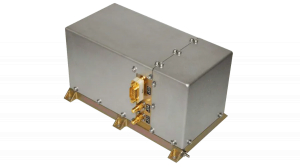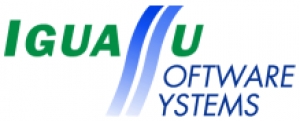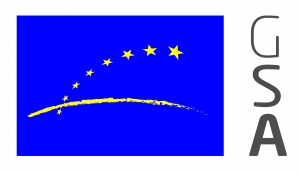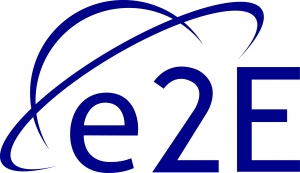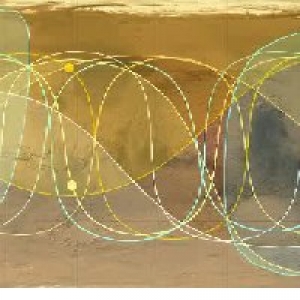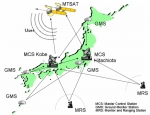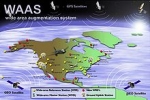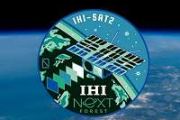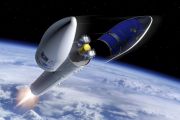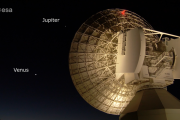Displaying items by tag: GNSS
Spectratime Rubidium Atomic Frequency Standard (RAFS)
Spectratime RAFS is designed with the latest technologies, providing advanced features, such as long lifetime, high reliability, lightweight and ultra low phase noise, for next-generation space applications.
Applications:
- GNSS/GPS navigational systems
- SAR systems
- FGU systems
- MRO systems
Key Features:
- Output 10 MHz and 10 MHz auxiliary
- Accuracy < 2E-10 after launch & commissioning < 1E-10 under vacuum at delivery
- Temp -5 to 10C
- Aging < 1E-10/yr
- Size (WxHxL) 217x124x117mm | 8.54x4.88x4.6"
- Weight 3.4 Kg | 7.49 lbs
- Lifetime/MTBF > 15 yrs / < 2000 fit span>
- Power (operating) < 35W
- Voltage 28V
- Warmup <60W
Iguassu Software Systems
Iguassu Software Systems (ISS) excels in design and development of technology software applications and in aerospace marketing consultancy for Latin America and central Europe. Its core business is with the European Space Agency (ESA) and other space customers. During the transition period before full ESA membership (PECS 2005-2008), ISS was the most successful Czech space company, having been awarded 6 contracts, 2 of which through participation in international competitive tenders. Since the Czech accession to the ESA convention at the end of 2008, ISS is again in the forefront – the only Czech company to be awarded more than one project (in fact 3) in the ESA Czech industrial incentive scheme in 2009 and the only one to win work in competitive tenders with Astrium D and EOX in 2010.
European Global Navigation Satellite Systems Agency (GSA)
The GSA’s mission is to support European Union objectives and achieve the highest return on European GNSS investment, in terms of benefits to users and economic growth and competitiveness, by:
- Designing and enabling services that fully respond to user needs, while continuously improving the European GNSS services and Infrastructure;
- Managing the provision of quality services that ensure user satisfaction in the most cost-efficient manner;
- Engaging market stakeholders to develop innovative and effective applications, value-added services and user technology that promote the achievement of full European GNSS adoption;
- Ensuring that European GNSS services and operations are thoroughly secure, safe and accessible.
Vitrociset Belgium
Vitrociset Belgium provides world class products, engineering services and support in the field of space programs and high technology projects.
Vitrociset has almost 30 years of experience and uninterrupted collaboration with Space Agencies and Satellite Operators.
Vitrociset’s specific areas of activity span from Satellite Technology to Telecommunications, from Information Technology to Users’ Application Development & Services. Vitrociset endeavor for high-level performance systems which encompass design, hardware & software development, integration and operation.
Vitrociset Belgium operates all along the projects lifespan, realizing and managing systems and services through solutions value-for-money and able to provide quality and security centred on the highest standards of innovation.
Quality Management System
Vitrociset Belgium successfully undergone and terminated the audit of the Quality Management System according to the ISO 9001:2015 standard. Our assessor was SGS Belgium NV- the world's leading inspection, verification, testing and certification company.
The certificate has been obtained on all the domains of activities of VITROCISET, which include:
- Management, Operations and Maintenance of large complex structure with electronics and software subsystems;
- Engineering, development, integration and deployment of electronics and information systems (ICT);
- Development of software suites and tools for Satellite Ground Data systems and Integrated Logistic applications;
- Development of added value applications for final users integrating different technologies available on the Space and Telecom domains;
- Supply, Logistics and PHST (Packing, Handling, Storage & Transport (ation)).
e2E Service Ltd
e2E Services Limited (“e2E”) provides systems engineering, technical support and expertise to a number of clients in the satellite communications Industry. Our services are provided across the full system lifecycle (i.e. end-to–end – e2E).
Service
The sister company e2E Satcom Limited, is addressing the use of innovative technology that is concentrated on supporting connectivity options across traditional satellite communication systems as well as unmanned aerial systems (UAS), High Altitude Platforms (HAP) and nano-satellite platforms.
Engineering capabilities being provided by e2E support the fundamental pillars of exemplary technical project management, communication systems engineering, system verification and service readiness. Whilst satellite communication remains our key focus, support to terrestrial, wireless and cellular systems continues to be served on request as does non-satellite space missions.
e2E strives to maintain and protect its reputation of independence, flexibility and pragmatism – all elements of which are considered essential for addressing complex and challenging scenarios. Always appreciating the “bigger picture” behind a market, programme or system ensures we do not lose sight of the commercial objectives whilst engaging diligently at the detailed level.
We have an impressive record of successfully completed assignments that are captured through case studies and demonstrations. These cover a range of satellite constellations and communication services including GEO, MEO and LEO missions.
e2E works efficiently on behalf of our clients and to an exceptionally high standard. Whether supplying subject matter experts, engineering core system/software components or delivering test related services, e2E is a credible option to any Organisation involved in space related systems and communications technology. The trust we have built with our client base is exemplified from a high level of repeat and long term business.
Mars GNSS FATIMA
The planetary science of recent days is very focused on our neighbor, planet Mars. Current navigation and positioning systems used by surface rovers or orbital systems are often complicated and their possible maintenance requires a huge effort of the ground control teams on Earth. Construction and design of these probes is expensive, due to necessary redundancy of their on-board systems, usually consisting of computers, sensors, navigation cameras and other intelligent technologies. Complexity of these current systems is making them very sensitive. Any small error in position calculation can result not only in wrong direction or in bad position determination, but can even endanger the whole mission. For example when such vehicle reaches some danger zone – like the edge of a crater, valley, or rocky area. Precise navigation and timing is one of the key factors of the next steps of Mars research. We are heading towards the next giant leap of Mankind, when the first humans will possibly land on a surface of Mars. Advanced robotic missions including flying robots, surface rovers, new orbital probes and possible future human mission, will need the one universal positioning system and one the universal time service. This can be resolved by proposed global navigation satellite system for Mars. We have used the name FATIMA as acronym for such system, which simply means Fix And TIme provisioning system for MArs. The constellation of FATIMA satellites orbiting Mars will provide real time positioning service, navigation service and timing service, for multiple users. This system will not be analogy to our Earth based GPS, Galileo or Glonass systems, but will be more complex and possibly maintained by the international control body on Earth. The system will be suitable also for the geodetic measurements and for the possible tectonic research of Mars. It will allow us to come personally beyond our own current human world. Author of the concept of the Mars GNSS FATIMA and of the research related to this is Dr. Jozef Kozar (http://www.sciencemars.com/kozar).
PosiTim
PosiTim is a service company focused on solutions and services for the high accuracy GNSS market.
The company offers expertise in satellite navigation requiring very high accuracy (accuracy of the order of centimeters or even millimeters). The focus of the PosiTim company is to propose a full service portfolio together with support in using high accuracy GNSS software.
These highly expert services use currently the high accuracy GNSS processing software NAPEOS. NAPEOS is developed and maintained at the European Space Operations Centre (ESOC) of the European Space Agency (ESA).
NAPEOS software
NAPEOS, the NAvigation Package for Earth Observation Satellites, is a state of the art software system for GNSS data processing providing results with a very accuracy.
NAPEOS is developed and maintained by the European Space Operations Centre (ESOC) of the European Space Agency (ESA). The NAPEOS developments started around 1995. In 2003 the GNSS capabilties started to be added a project that was finished in 2007. After significant testing the navigation support office at ESOC (OPS-GN) started to use the NAPEOS software in January 2008 for all its IGS activities.
A significant number of companies and individuals have been involved in the development of the NAPEOS software. Of course the major part of the GNSS work has been done at the navigation support office (OPS-GN) at ESOC with a special mentioning for the company GMV. GMV has been responsible for major parts of the actual programming of the NAPEOS source code.
At OPS-GN, in ESOC, NAPEOS supports all the activities in the International GNSS Service (IGS), the International DORIS Service (IDS), the International Laser Ranging Service (ILRS), and other international scientific communities. NAPEOS is also used for the routine precise orbit determination (POD) of several LEO missions, e.g., the ESA ENVISAT mission.
NAPEOS allows fully automated, robust, and reliable GNSS processing at very high accuracy levels with processing efficiency.
Commercial services using NAPEOS are proposed by the company PosiTim.
Multi-functional Satellite Augmentation System (MSAS)
Multi-functional Satellite Augmentation System (MSAS) is a Japanese SBAS (Satellite Based Augmentation System), i.e. a satellite navigation system which supports differential GPS (DGPS) designed to supplement the GPS system by reporting (then improving) on the reliability and accuracy of those signals.
A similar service is provided in North America by Wide Area Augmentation System (WAAS), and in Europe by European Geostationary Navigation Overlay Service (EGNOS).
It is operated by the Japan's Government.
Wide Area Augmentation System (WAAS)
The Wide Area Augmentation System (WAAS) is an air navigation aid developed by the Federal Aviation Administration to augment the Global Positioning System (GPS).
The goal is to improve the GPS signal accuracy, integrity, and availability. Essentially, WAAS is intended to enable aircraft to rely on GPS for all phases of flight, including precision approaches to any airport within its coverage area.
WAAS uses a network of ground-based reference stations, in North America and Hawaii, to measure small variations in the GPS satellites' signals in the western hemisphere. Measurements from the reference stations are routed to master stations, which queue the received Deviation Correction and send the correction messages to geostationary WAAS satellites in a timely manner (every 5 seconds or better). Those satellites broadcast the correction messages back to Earth, where WAAS-enabled GPS receivers use the corrections while computing their positions to improve accuracy.
The International Civil Aviation Organization (ICAO) calls this type of system a satellite-based augmentation system (SBAS).
Similar service is provided in Asia, notably Japan, by the Multi-functional Satellite Augmentation System (MSAS), and in Europe by European Geostationary Navigation Overlay Service (EGNOS).

